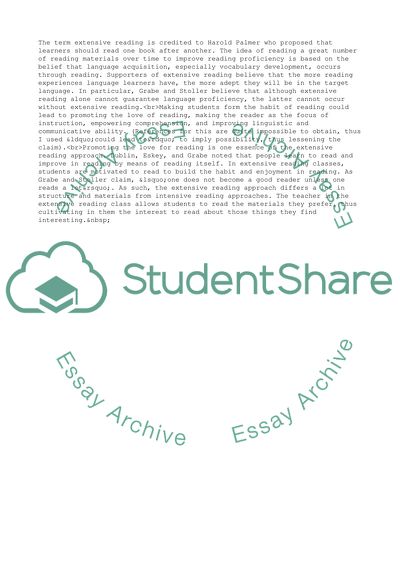Cite this document
(“Promoting Advanced Reading through the Extensive Reading Approach Assignment - 1”, n.d.)
Promoting Advanced Reading through the Extensive Reading Approach Assignment - 1. Retrieved from https://studentshare.org/management/1751789-extensive-reading-approach-and-contrast-this-with-direct-or-component-skills
Promoting Advanced Reading through the Extensive Reading Approach Assignment - 1. Retrieved from https://studentshare.org/management/1751789-extensive-reading-approach-and-contrast-this-with-direct-or-component-skills
(Promoting Advanced Reading through the Extensive Reading Approach Assignment - 1)
Promoting Advanced Reading through the Extensive Reading Approach Assignment - 1. https://studentshare.org/management/1751789-extensive-reading-approach-and-contrast-this-with-direct-or-component-skills.
Promoting Advanced Reading through the Extensive Reading Approach Assignment - 1. https://studentshare.org/management/1751789-extensive-reading-approach-and-contrast-this-with-direct-or-component-skills.
“Promoting Advanced Reading through the Extensive Reading Approach Assignment - 1”, n.d. https://studentshare.org/management/1751789-extensive-reading-approach-and-contrast-this-with-direct-or-component-skills.


